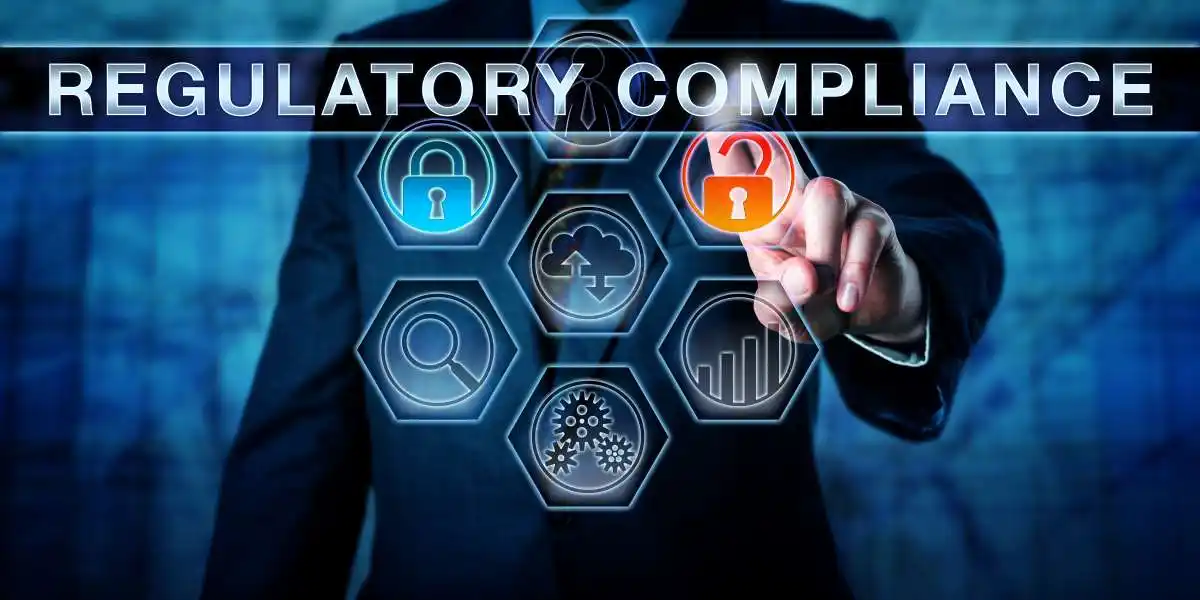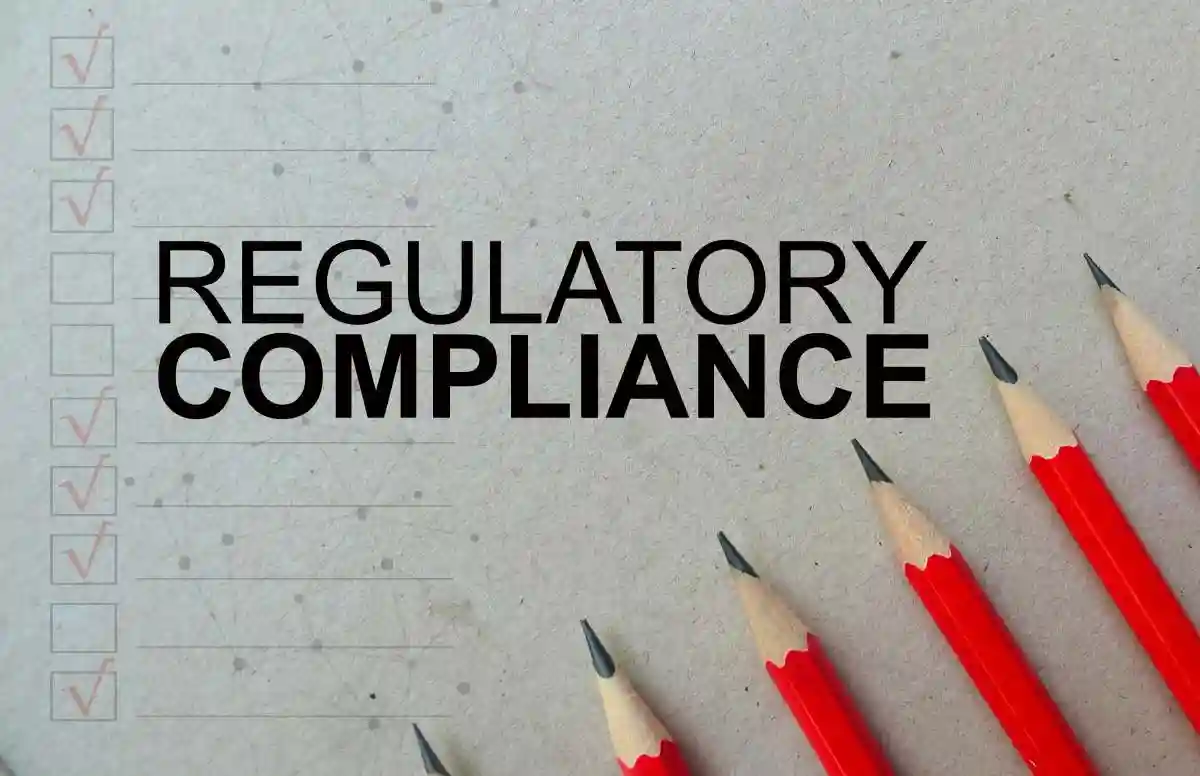Introduction to the The Vital Role of Regulatory Bodies
- The Vital Role of Regulatory Bodies: Has never been more apparent than in 2025, where these agencies serve as crucial guardians across sectors like fintech and healthcare, where fraud incidents are increasingly reported.
- Regulatory Bodies: Nearly one-third of companies report falling victim to fraud or financial crime within the past five years. The devastating consequences of regulatory failures have never been more apparent than in 2025, where inadequate oversight continues to trigger securities class action lawsuits and massive investor losses across sectors ranging from fintech to healthcare.
- Enforcement Agencies: Regulatory bodies serve as the primary defense against corporate misconduct that can destroy shareholder value overnight. These agencies monitor compliance with federal securities laws, investigate potential violations, and impose penalties that can reach hundreds of millions of dollars when companies fail to maintain adequate controls.
- Healthcare Oversight: Healthcare regulatory agencies face particular challenges in monitoring individual practitioners and corporate facilities while ensuring compliance with evolving standards. These agencies must balance innovation with patient safety, often investigating cases that later become the foundation for securities litigation when publicly traded healthcare companies misrepresent their compliance status.
- ESG Compliance Failures: The complexity of modern regulatory compliance creates significant liability exposure for organizations. While 91% of business leaders acknowledge their company’s duty to address ESG matters, 67% of global executives report that ESG standards remain too intricate. This confusion frequently leads to compliance failures that trigger regulatory enforcement actions and subsequent securities class action lawsuits.
- Critical Understanding: The gap between regulatory requirements and corporate understanding represents a fundamental risk factor that can devastate unprepared organizations.
- This guide examines:
- Regulatory body evolution and enforcement authority
- Securities litigation consequences of compliance failures
- Healthcare, finance, and environmental oversight mechanisms
- Emerging challenges facing regulatory agencies in 2025
- Technology’s impact on regulatory compliance
- Essential Knowledge: Understanding these oversight institutions represents far more than academic exercise—it constitutes essential protection against the catastrophic financial and legal consequences that await companies unprepared for today’s regulatory environment.
Understanding Regulatory Bodies: Essential Protection Against Corporate Misconduct in 2025
- Regulatory Bodies: Independent governmental agencies established through Congressional legislation to create standards and enforce regulations that protect investors from corporate fraud and misconduct. These agencies operate with substantial authority to investigate violations, impose penalties, and pursue securities litigation when companies fail to comply with federal laws.
- Critical Authority: The increasing complexity of financial markets, healthcare fraud, and environmental violations in 2025 has made regulatory oversight more essential than ever for preventing the devastating losses that trigger securities class action lawsuits.
1. Defining Regulatory Authority and Enforcement Power
- Congressional Authorization: Regulatory agencies derive their power from enabling legislation that grants specific authority for rulemaking, investigation, and enforcement. These independent organizations operate within the executive branch while maintaining the autonomy necessary to pursue securities fraud cases and other violations without political interference.
- Enforcement Mechanisms: The primary functions that protect investors and prevent accounting fraud include:
- Rulemaking Authority: Creating binding standards that companies must follow or face regulatory sanctions
- Investigation Powers: Conducting detailed examinations of corporate practices and financial statements
- Penalty Assessment: Imposing fines, sanctions, and corrective measures for violations
- Licensing Control: Setting entry requirements and monitoring professional competency
- Legal Action: Pursuing civil and criminal enforcement through federal courts
- Substantial Penalties: Regulatory bodies possess the capacity to issue cease and desist orders, revoke business licenses, conduct surprise inspections, and impose penalties reaching hundreds of millions of dollars. When these enforcement actions reveal material misstatements or fraud, they frequently trigger securities class action lawsuits filed by investors seeking recovery of their losses.
2. Market Integrity and Investor Protection
- Primary Mission: Securities regulation serves multiple critical objectives including investor protection, market integrity maintenance, efficiency improvement, and systemic risk prevention. When regulatory agencies fail to adequately monitor corporate compliance, the resulting accounting fraud and securities litigation can devastate investor portfolios and retirement savings.
- Healthcare Compliance: Healthcare regulatory bodies face mounting pressure to prevent fraud while adapting to technological innovations. These agencies must balance innovation with patient safety, investigating cases that often become the foundation for securities class action lawsuits when publicly traded healthcare companies misrepresent their regulatory compliance status.
- Public Protection Mandate: Healthcare regulators fulfill their investor protection responsibilities through:
- Standards Enforcement: Implementing rigorous practice standards that prevent patient harm
- Professional Monitoring: Maintaining comprehensive registers of licensed practitioners
- Misconduct Detection: Monitoring conduct and competency to identify potential violations
- Sanctions Implementation: Taking swift action against negligence or fraudulent practices
- Trust and Market Stability: Regulatory organizations must maintain public confidence—a critical component for financial market stability and healthcare system integrity. The alarming statistic that about one-third of companies report being victims of fraud or financial crime demonstrates the urgent need for robust regulatory oversight.

3. Key Regulatory Agencies and Their Enforcement Impact
- Food and Drug Administration (FDA): Oversees pharmaceutical safety and food products, with enforcement actions that can trigger significant stock price volatility when companies face FDA violations. The agency regulates drugs, medical devices, food safety, and tobacco products, with compliance failures often leading to securities litigation when investors suffer losses from regulatory enforcement actions. Recent FDA adaptations address emerging challenges including accelerated therapy development and biotechnology innovations.
- Securities and Exchange Commission (SEC): Established following the 1929 market crash, the SEC serves as the primary enforcement agency for securities fraud prevention. The agency’s mission focuses on investor protection, market fairness, and capital formation facilitation. SEC enforcement actions frequently serve as the catalyst for securities class action lawsuits, providing the foundation for investor recovery when companies violate federal securities laws.
- Environmental Protection Agency (EPA): Develops environmental regulations that create substantial compliance costs and legal exposure for corporations. EPA enforcement actions can result in massive penalties and cleanup costs that significantly impact company financial performance, often triggering securities class actions when environmental liabilities are inadequately disclosed.
- Financial Industry Regulatory Authority (FINRA): Although technically a self-regulatory organization under SEC oversight, FINRA wields significant authority over broker-dealers and financial professionals. FINRA processes between 37-75 billion transactions daily to monitor market activity and detect potential violations. FINRA enforcement actions against financial firms frequently result in regulatory sanctions that damage stock prices and trigger investor lawsuits.
- Additional Enforcement Agencies: The Federal Trade Commission protects consumers from deceptive business practices, the Consumer Product Safety Commission monitors product safety, and the National Highway Traffic Safety Administration oversees automotive safety—all agencies whose enforcement actions can significantly impact publicly traded companies and result in securities litigation.
- Cybersecurity Focus: Financial sector regulators have prioritized cybersecurity enforcement in 2025, recognizing that data breaches and cyber incidents create substantial liability exposure for financial institutions and technology companies.

The Legal and Historical Foundations of Oversight
- Historical Origins: Federal regulatory oversight emerged from catastrophic market failures that devastated investors and undermined public confidence in American commerce during the late 19th century. The railroad monopolies of this era engaged in discriminatory pricing practices that triggered widespread economic disruption, creating the foundational crisis that would establish the precedent for modern regulatory enforcement and securities litigation.
The Interstate Commerce Commission (1887): Setting the Precedent for Regulatory Authority
- The Interstate Commerce Commission represented a watershed moment in American legal history, establishing the first federal agency with authority to investigate corporate misconduct and impose penalties for violations. Created by the Interstate Commerce Act of 1887, the ICC emerged from widespread anti-railroad agitation led primarily by western farmers and rural communities who suffered devastating financial losses due to railroad monopolistic practices. President Grover Cleveland appointed Thomas M. Cooley, former Dean of the University of Michigan Law School and Chief Justice of the Michigan Supreme Court, as the first ICC chairman.
- Constitutional Foundation: The Act applied the Constitution’s Commerce Clause to regulate railroad rates, mandating that they be “reasonable and just” while prohibiting specific discriminatory practices that had triggered massive investor losses:
- Rebates to high-volume users that distorted competitive markets
- Higher rates for shorter hauls compared to long-distance transportation
- Rate discrimination between similarly situated customers
- Early Enforcement Challenges: The ICC initially struggled with inadequate enforcement powers, facing aggressive litigation from railroad companies that successfully challenged its ratemaking authority in federal courts. These early defeats severely limited the agency’s effectiveness and demonstrated the critical importance of robust enforcement mechanisms—a lesson that would prove essential in preventing the types of corporate scandals that later trigger securities class action lawsuits.
- Legal Precedent: Despite these setbacks, the ICC established a crucial precedent that continues to shape regulatory authority today: Congress possessed broad power under the Commerce Clause to address national economic problems involving interstate commerce. This precedent became the foundation for virtually all subsequent regulatory agencies and their enforcement actions.
Evolution of Sector-Specific Agencies
Regulatory Expansion: Following the ICC’s establishment, Congress created numerous specialized agencies to address emerging threats to market integrity and investor protection. These early agencies operated outside executive departments with significant independence from presidential control—members could only be dismissed “for cause” rather than serving at presidential pleasure.
New Deal Transformation: The 1930s marked a dramatic expansion of regulatory authority under President Franklin D. Roosevelt’s New Deal. This period witnessed the creation of agencies that would become central to modern securities litigation:
- The National Labor Relations Board (NLRB)
- The Securities and Exchange Commission (SEC)
- Constitutional Concerns: The rapid expansion raised serious concerns about potentially unconstitutional delegation of legislative powers to federal agencies. These concerns culminated in the 1946 Administrative Procedure Act (APA), which represented the first significant regulatory reform designed to balance bureaucratic expertise with democratic accountability.
- Responsive Creation: Each regulatory body emerged in response to specific market failures—novel financial instruments, complex corporate structures, or cross-jurisdictional fraud schemes that threatened investor confidence. Sector-specific regulators received authority to regulate rates, terms of service, and market entry to prevent the abuse of monopoly power that had previously devastated investors.
Legislative Acts That Empower Modern Regulatory Bodies
- Foundational Legislation: Congress established federal regulatory agencies through detailed enabling legislation that defined their investigative powers, enforcement authority, and penalties for violations. The Securities Exchange Act of 1934 exemplifies this approach, creating the SEC with five commissioners appointed by the President with Senate consent, while specifying that “not more than three commissioners shall be members of the same political party”.
- Strengthening Enforcement Authority: Several key legislative acts enhanced regulatory power and enforcement capabilities:
- Hepburn Act (1906): Empowered the ICC to set maximum railroad rates and expanded jurisdiction to cover bridges, terminals, ferries, and transportation infrastructure
- Mann-Elkins Act (1910): Strengthened ICC authority over railroad rates while extending jurisdiction to telephone, telegraph, and cable companies
- Administrative Procedure Act (1946): Established requirements that regulations be grounded in statutory law and include public notice-and-comment procedures
- Modern Oversight Framework: The Paperwork Reduction Act of 1980 created the Office of Information and Regulatory Affairs (OIRA) within the White House, establishing centralized regulatory oversight within the executive branch. Federal courts played an equally crucial role in defining agency boundaries, gradually abandoning strict non-delegation doctrines while requiring that statutes include “intelligible principles” to guide executive enforcement action.
- Contemporary Relevance: This historical legal framework enables regulatory bodies to investigate corporate misconduct, impose substantial penalties, and maintain the market integrity essential for preventing the types of fraud that trigger devastating securities class action lawsuits. The lessons learned from early regulatory failures continue to inform modern enforcement strategies designed to protect investors and maintain confidence in American financial markets.

Core Functions and Enforcement Mechanisms
- Regulatory Authority: Regulatory bodies wield substantial enforcement power that can determine whether companies face catastrophic securities class action lawsuits or maintain compliance with federal requirements. These agencies operate through systematic functions designed to identify violations before they devastate investor confidence and trigger massive legal settlements.
Rulemaking and Standard-Setting Authority
- Federal agencies establish standards through rigorous processes that balance industry input with investor protection imperatives. The rulemaking process unfolds through critical phases that determine whether companies face future liability exposure.
- Environmental Scanning: Agencies like the Public Company Accounting Oversight Board (PCAOB) identify emerging audit issues through oversight activities and discussions with SEC staff. This early detection system helps prevent the types of accounting fraud that later trigger securities litigation.
- Rule Formulation: Regulatory development involves interdivisional research teams evaluating potential regulatory responses and analyzing impacts on affected entities. Companies that ignore these developments often find themselves unprepared when new requirements create compliance obligations.
- Public Comment Integration: The IFRS Foundation considers transparency, full consultation, and accountability as underlying principles that make their due process robust. Smart organizations participate actively in these comment periods to avoid costly compliance failures.
- Implementation Requirements: PCAOB standards must receive SEC approval before becoming effective. This multi-layered approval process means companies have advance warning of new requirements—ignoring these signals can prove costly when violations trigger regulatory enforcement actions.
Investigation Powers and Penalty Structure
- Non-compliance triggers severe financial consequences that can devastate unprepared organizations. Regulatory bodies deploy multiple enforcement mechanisms designed to deter violations and protect market integrity.
- Monetary Penalties: Monetary fines vary dramatically based on violation severity. GDPR violations can reach €20 million or 4% of global annual revenue. HIPAA penalties range from $100 to $50,000 per violation, with maximum annual penalties of $1.5 million for identical violations.
- Criminal Enforcement: Severe violations result in imprisonment. The HHS Office of Inspector General enforcement actions in 2023 resulted in approximately 120 individuals receiving jail sentences.
- Administrative Sanctions: License revocation, suspension, or operational restrictions can effectively terminate business operations. These sanctions often prove more devastating than monetary penalties.
- Remedial Requirements: Corporate Integrity Agreements require organizations to implement additional security measures or retain independent review organizations. These agreements create ongoing compliance costs that can persist for years.
Monitoring and Inspection Systems
- Regulatory oversight systems detect violations through systematic monitoring that identifies problems before they escalate into major scandals.
- Compliance Monitoring Programs: These encompass all activities determining whether facilities meet applicable laws, including inspections, evaluations, investigations, and data collection.
- Inspection Protocols: Regulatory inspections range from brief assessments to extensive investigations lasting weeks. The PCAOB annually inspects registered accounting firms providing audit reports for more than 100 issuers.
- Audit Integration: Regular internal audits help organizations identify potential compliance issues before formal regulatory inspections occur. Companies maintaining effective audit programs demonstrate better regulatory compliance and reduced securities litigation risk.
Securities Litigation Integration
- Regulatory enforcement directly intersects with private securities class actions, creating dual liability exposure for companies that violate federal requirements.
- SEC Enforcement Role: The SEC protects investors through enforcement while maintaining market integrity. SEC enforcement actions frequently trigger private litigation, as regulatory actions often lead to surges in private securities class action lawsuits.
- Class Action Efficiency: Class action mechanisms resolve large numbers of similar claims efficiently. Federal agencies typically avoid complex litigation procedures, but private attorneys use regulatory findings to build stronger securities fraud cases.
- Administrative Innovation: The Equal Employment Opportunity Commission created administrative class action procedures modeled after Rule 23 of the Federal Rules of Civil Procedure. The uses Statistical Sampling Initiative to resolve hundreds of common claims through statistical extrapolation.
- Dual Liability Risk: Companies facing regulatory enforcement often simultaneously confront private securities litigation, creating massive financial exposure that can exceed hundreds of millions in combined penalties and settlements.
Sector-Specific Oversight: Healthcare, Finance, and More
- Specialized Enforcement: Sector-specific regulatory bodies wield distinct enforcement powers tailored to address the unique risks and compliance failures that plague their respective industries. These agencies operate under specialized statutory authority that enables them to impose industry-specific penalties and remediation requirements.
1. SEC Enforcement in Securities Class Action Lawsuits
- SEC Authority: The Securities and Exchange Commission operates with broad civil enforcement authority designed to hold violators of federal securities laws accountable through multiple mechanisms. The agency’s enforcement powers prove essential for recovering investor funds, conducting thorough investigations of potential violations, and pursuing litigation through both federal courts and administrative proceedings.
- Investigation Process: SEC investigations remain confidential until evidence of wrongdoing emerges, at which point enforcement actions become public. The parallel nature of SEC enforcement and private securities class actions creates a powerful deterrent effect. Between 2010 and 2018, private securities class action settlements totaled $31.00 billion, nearly matching the $32.00 billion in penalties and disgorgement secured by SEC enforcement during the same period.
- Piggybacking Actions: Approximately 20% of class action settlements target the same misconduct as parallel SEC enforcement actions. These coordinated enforcement efforts demonstrate higher success rates in surviving dismissal motions and achieving substantial settlements for harmed investors.
2. FDA Drug and Food Safety Enforcement
- Public Health Protection: The Food and Drug Administration serves as the primary guardian of public health through rigorous oversight of products affecting millions of Americans daily. The agency’s mandate encompasses protecting public health, accelerating medical innovation, and providing science-based information to healthcare providers and consumers.
- Multi-Step Drug Approval: The FDA drug approval process requires extensive evidence demonstrating safety and efficacy for intended uses. Companies must first submit Investigational New Drug Applications after completing preliminary laboratory testing. Following successful clinical trials, manufacturers submit New Drug Applications containing detailed safety and efficacy data.
- Enforcement Consequences: FDA violations can result in warning letters, product recalls, facility shutdowns, and criminal referrals for serious violations. Companies face significant financial exposure when FDA enforcement actions reveal previously undisclosed compliance issues to investors.
3. HIPAA Compliance and Healthcare Privacy
- Healthcare Privacy Standards: The Health Insurance Portability and Accountability Act establishes national standards for protecting medical records and personal health information. HIPAA violation complaints increased by 39% from 2017 to 2021, while large breach reports surged by 58%.
- Covered Entities: HIPAA applies to health plans, healthcare clearinghouses, and healthcare providers conducting electronic transactions. The Security Rule mandates reasonable administrative, physical, and technical safeguards for protecting electronic protected health information, ensuring confidentiality, integrity, and availability of all patient data.
- Financial Penalties: HIPAA violations carry penalties ranging from $100 to $50,000 per violation, with maximum annual penalties of $1.5 million for identical violations. Healthcare companies often face securities litigation when privacy breaches reveal inadequate internal controls or misrepresentations about compliance programs.
 4. EPA Environmental Enforcement
4. EPA Environmental Enforcement
- Environmental Protection Authority: The Environmental Protection Agency implements mandatory requirements affecting individuals, businesses, and government entities through Title 40 of the Code of Federal Regulations. The agency’s enforcement authority extends across multiple environmental statutes designed to protect human health and natural resources.
- Regulatory Development Process: EPA regulations undergo structured development including Federal Register publication, public comment periods, and final codification. The agency administers comprehensive environmental laws including the Clean Air Act, Safe Drinking Water Act, and Toxic Substances Control Act.
- Severe Penalties: Environmental violations carry consequences ranging from monetary fines to imprisonment. The largest civil penalty for environmental law violations reached $83.40 million, demonstrating the significant financial exposure companies face when environmental compliance failures are discovered.
- Corporate Liability: Publicly traded companies with environmental violations often face securities class action lawsuits when corrective disclosures about regulatory enforcement actions cause stock price declines and investor losses.
Challenges Facing Regulatory Bodies in 2025
- Regulatory Failures: Regulatory bodies face mounting threats to their effectiveness in 2025. These challenges create dangerous vulnerabilities that can trigger massive securities class action lawsuits when oversight mechanisms fail to prevent corporate misconduct.
1. Regulatory Capture and Political Pressure
- Regulatory Capture: Companies systematically undermine regulatory oversight through sophisticated influence campaigns designed to neutralize enforcement actions. This corruption of the regulatory process creates environments where accounting fraud and other violations can flourish undetected.
- The “Revolving Door”: Industry executives move seamlessly into regulatory positions, creating conflicts of interest that compromise enforcement decisions. When regulators prioritize industry relationships over investor protection, the resulting corporate governance failures often trigger costly securities litigation.
- Resource Imbalances: Industries invest millions in lobbying and influence campaigns while public interest groups lack comparable resources to counter corporate pressure. Research demonstrates that when popular interests conflict with industry preferences, public interests prevail in statistically insignificant instances.
- Democratic Erosion: Regulatory capture undermines fundamental democratic principles as agencies increasingly serve private interests rather than protecting investors and consumers from fraud.
2. Complexity of ESG Compliance
- ESG Regulatory Chaos: The fragmented ESG regulatory landscape creates massive compliance risks that can devastate unprepared companies through enforcement actions and subsequent securities class actions.
- Federal Failures: Federal climate disclosure rules remain stalled amid legal challenges and political interference. State-level regulations create conflicting requirements, with California implementing landmark climate disclosure laws SB 253 and SB 261 while over 40 anti-ESG bills have been enacted across 21 states.
- Compliance Impossibility: Companies must satisfy contradictory state-level policies—complying with pro-ESG jurisdictions while avoiding violations in anti-ESG states. These operational and strategic complexities create significant liability exposure when companies inevitably fail to satisfy conflicting requirements.
3. Fragmentation and Overlapping Jurisdictions
- Jurisdictional Chaos: The fragmented U.S. financial regulatory structure creates dangerous gaps in oversight that fraudsters exploit. Multiple agencies with overlapping authorities produce:
- Enforcement Inefficiencies: Regulatory processes become cumbersome and inconsistent
- Oversight Gaps: Similar institutions face different oversight standards
- Consumer Vulnerability: Protection levels vary dramatically across similar financial products
- Multiple Masters: Financial entities often fall under several regulators’ authority depending on their activities. Some activities face duplicative regulation while others remain completely unmonitored.
4. Public Skepticism and Trust Deficit
- Confidence Crisis: Public trust in federal government has reached dangerously low levels. Only 22% of Americans trust the government to do what is right “just about always” or “most of the time” while 61% believe the government is wasteful and 67% see it as corrupt.
- Enforcement Breakdown: When regulations are viewed with widespread skepticism, compliance becomes voluntary rather than mandatory. This trust deficit undermines regulatory effectiveness and creates environments where corporate misconduct can flourish.
- Systemic Risk: The combination of public distrust and regulatory capture creates perfect conditions for corporate scandals that trigger massive securities litigation and destroy investor confidence.

Technology and the Future of Regulatory Compliance
- Advanced Detection Systems: Technological innovations represent the most significant development in regulatory compliance management in 2025, providing agencies with tools that can identify potential securities fraud before it triggers devastating securities class action lawsuits.
1. AI-driven tools for regulatory enforcement
- Artificial Intelligence Applications: AI systems now serve as the primary defense against accounting fraud and other regulatory violations that historically went undetected until massive investor losses occurred. These systems analyze vast datasets to identify compliance risks, detecting unusual patterns that might indicate violations.
- Predictive Enforcement: AI algorithms predict potential compliance issues before they escalate into securities litigation, allowing for preemptive intervention rather than post-violation penalties that often reach hundreds of millions of dollars. Natural Language Processing: Through advanced language processing capabilities, AI tools interpret complex regulatory requirements, eliminating the ambiguity in compliance standards that has historically enabled corporate misconduct.
- Prevention Over Punishment: This proactive approach represents a fundamental shift from traditional enforcement models that relied on detecting fraud after investor harm occurred.
2. Internal controls and automation in compliance
- Automated Control Systems: Organizations have discovered that automated internal controls represent the most effective defense against the types of control failures that trigger regulatory enforcement actions. Companies operating at median performance levels have automated approximately 25% of their primary controls, while top performers reach 40% automation rates.
- Key Control Benefits:
- Consistent execution regardless of transaction volume or timing pressures
- Elimination of human error in compliance processes that often create liability exposure
- Real-time monitoring of transactions that can flag potential violations immediately
- Segregation of Duties: Automation embedded directly into business workflows ensures proper approval hierarchies while enforcing segregation of duties within systems, creating multiple checkpoints that make fraudulent activities significantly more difficult to execute undetected.
3. Role of platforms like GetGenAI
- Specialized Compliance Platforms: Dedicated regulatory compliance management platforms have emerged as essential tools for preventing the regulatory failures that lead to costly securities class actions. Solutions like Compliance.ai deploy machine learning models to monitor regulatory environments continuously, filtering relevant changes for specific enterprises.
- Integrated Compliance Management: These platforms map regulations to internal policies, procedures, and controls, enabling standardized regulatory change management processes that prevent the gaps in oversight that often result in accounting irregularities.
- Real-Time Monitoring: Companies using these platforms can track regulatory changes as they occur, avoiding the delayed compliance responses that frequently trigger enforcement investigations.

4. Data analytics for proactive oversight
- Proactive Compliance Strategy: Data analytics has become essential in modern regulatory oversight, particularly for companies seeking to avoid the regulatory failures that destroy shareholder value. Organizations shifting from reactive to proactive compliance approaches realize several critical benefits:
- Early Warning Systems: Identification of potential compliance issues before they develop into violations that could trigger securities litigation
- Cost Prevention: Significant cost savings through automation of routine monitoring compared to the astronomical expenses of securities class action settlements
- Regulatory Resilience: Enhanced ability to withstand regulatory scrutiny and avoid the reputational damage associated with enforcement actions
- Strategic Transformation: This proactive approach has become global best practice, enabling compliance teams to serve as strategic enablers rather than reactive responders to regulatory crises. The most successful organizations recognize that technology investments in compliance prevention cost far less than the price of regulatory failures and subsequent litigation.
The Strategic Imperative of Regulatory Understanding
- Regulatory oversight represents far more than bureaucratic necessity—it constitutes the foundational framework that determines whether organizations survive or succumb to the devastating consequences of compliance failures. The evidence remains stark: nearly one-third of companies affect nearly one-third of companies globally report falling victim to fraud or financial crime, with regulatory violations frequently serving as the catalyst for securities class action lawsuits that can destroy decades of shareholder value overnight.
- Strategic Advantages emerge for organizations that master regulatory complexity rather than merely react to enforcement actions. Companies that anticipate regulatory changes position themselves to avoid the catastrophic penalties and reputational damage that have cost organizations hundreds of millions in settlements and legal fees. This proactive stance extends beyond mere compliance—it creates competitive advantages in markets where regulatory failures can eliminate competitors instantly.
- Historical precedent demonstrates the enduring power of regulatory frameworks. The Interstate Commerce Commission established in 1887 established principles that continue to guide modern enforcement actions, while agencies like the SEC and FDA have evolved to address sophisticated financial fraud schemes and complex safety violations that threaten public welfare and market integrity.
- Enforcement consequences create existential risks for unprepared organizations. Monetary fines reaching €20 million under GDPR, criminal penalties resulting in prison sentences for executives, and administrative sanctions including license revocations represent only the immediate costs. The long-term damage from securities litigation, regulatory scrutiny, and market confidence erosion often proves far more devastating than initial penalties.
- Technology solutions offer unprecedented capabilities for organizations serious about regulatory compliance. AI-driven detection systems identify potential violations before they trigger enforcement actions, while automated internal controls eliminate the human errors that frequently lead to compliance failures. Data analytics enable proactive oversight that transforms regulatory departments from cost centers into strategic assets that protect organizational survival.
- The fundamental reality remains unchanged despite technological advances: regulatory bodies will continue expanding their authority and enforcement capabilities as markets grow more complex and interconnected. Organizations that fail to adapt face inevitable collision with enforcement actions that can trigger securities class actions, criminal investigations, and corporate dissolution.
- Professional expertise recognizes that regulatory compliance has evolved beyond legal obligation into strategic imperative that determines organizational viability. Companies that embrace this reality while implementing robust compliance frameworks protect themselves against the regulatory failures that have destroyed countless organizations unprepared for today’s enforcement environment.
Key Takeaways
Understanding regulatory bodies is crucial for navigating today’s complex business environment, where nearly one-third of companies report fraud incidents and 91% of leaders recognize their ESG responsibilities.
• Regulatory bodies serve as essential guardians protecting public interest through rulemaking, enforcement, and monitoring across healthcare, finance, and environmental sectors.
• Technology is revolutionizing compliance management with AI-driven tools detecting violations, automated controls reducing errors, and data analytics enabling proactive oversight.
• Major challenges threaten regulatory effectiveness including political pressure, regulatory capture, conflicting ESG requirements, and declining public trust at just 22%.
• Enforcement mechanisms carry significant consequences ranging from monetary fines up to €20 million under GDPR to criminal penalties and license revocations.
• Proactive compliance strategies outperform reactive approaches by identifying issues early, reducing costs through automation, and building resilience against regulatory scrutiny.
The regulatory landscape continues evolving rapidly, making comprehensive understanding not just a legal obligation but a strategic imperative for organizational success and market stability.
FAQs
Q1. What are regulatory bodies and why are they important in 2025? Regulatory bodies are independent government agencies that create and enforce standards in specific sectors to protect public interests and maintain market integrity. In 2025, they are crucial for overseeing complex financial markets, healthcare systems, and environmental concerns, helping to prevent fraud and ensure compliance with laws and regulations.
Q2. How do regulatory bodies enforce compliance? Regulatory bodies use various enforcement mechanisms, including monetary fines, criminal penalties, administrative sanctions, and corrective action plans. They also conduct investigations, audits, and inspections to monitor compliance. In severe cases, they can revoke licenses or impose restrictions on businesses that fail to comply with industry regulations.
Q3. What challenges do regulatory bodies face in 2025? Key challenges include regulatory capture (undue industry influence), political pressure, complexity of ESG compliance, fragmentation and overlapping jurisdictions, and public skepticism. These issues can undermine the effectiveness of regulatory bodies and their ability to protect public interests.
Q4. How is technology changing regulatory compliance? Technology is transforming compliance management through AI-driven tools for detecting violations, automated internal controls, specialized compliance management platforms, and data analytics for proactive oversight. These innovations enable more precise monitoring, analysis, and enforcement of regulations.
Q5. What are the benefits of understanding regulatory frameworks? Understanding regulatory frameworks helps organizations protect themselves from fraudulent activities, clarify compliance requirements, anticipate regulatory changes, and reduce exposure to costly penalties and reputational damage. It also allows companies to position themselves strategically within their competitive landscapes while contributing to safer, more transparent economic systems.
Contact Timothy L. Miles Today for a Free Case Evaluation
If you suffered substantial losses and wish to serve as lead plaintiff in a securities class action, or have questions about securities class action settlements, or just general questions about your rights as a shareholder, please contact attorney Timothy L. Miles of the Law Offices of Timothy L. Miles, at no cost, by calling 855/846-6529 or via e-mail at [email protected]. (24/7/365).
Timothy L. Miles, Esq.
Law Offices of Timothy L. Miles
Tapestry at Brentwood Town Center
300 Centerview Dr. #247
Mailbox #1091
Brentwood,TN 37027
Phone: (855) Tim-MLaw (855-846-6529)
Email: [email protected]
Website: www.classactionlawyertn.com
Facebook Linkedin Pinterest youtube
Visit Our Extensive Investor Hub: Learning for Informed Investors





